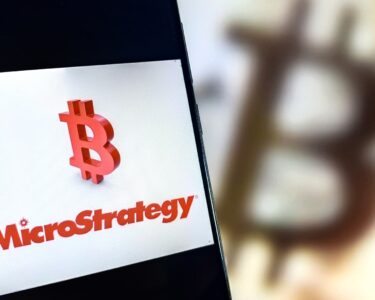Momo Productions | Digitalvision | Getty Images
While many investors have flocked to exchange-traded funds, they haven’t gained much ground with 401(k) plan participants.
Exchange-traded funds, or ETFs, debuted in the early 1990s and have since captured about $10 trillion.
Mutual funds hold about $20 trillion, but ETFs have chipped away at their dominance: ETFs hold a 32% market share versus mutual fund assets, up from 14% a decade ago, according to Morningstar Direct data.
“ETFs are becoming the novel structure to be used in wealth-management-type accounts,” said David Blanchett, head of retirement research at PGIM, Prudential’s investment management arm.
However, that same zeal hasn’t been true for investors in workplace retirement plans, a huge pot of largely untapped potential for the ETF industry.
At the end of 2023, 401(k) plans held $7.4 trillion, according to the Investment Company Institute, or ICI, and had more than 70 million participants. Other 401(k)-type plans, such as those for workers in universities and local government, held an additional $3 trillion, ICI data shows.
But hardly any of those assets are in ETFs, experts said.
“There’s a lot of money [in workplace plans], and there’s going to be more,” said Philip Chao, a certified financial planner who consults with companies about their retirement plans.
“It’s the final frontier [for ETFs], in the sense of trying to capture the next big pool of money,” said Chao, the founder of Experiential Wealth, based in Cabin John, Maryland.
More from ETF Strategist:
Warren Buffett’s S&P 500 bet paid off
How a tax increase may affect your brokerage account
What to do with RMDs when you don’t need the money
About 65% of 401(k) assets were invested in mutual funds at the end of 2023, according to ICI data. The group doesn’t report a corresponding statistic for ETFs.
A separate report from the Plan Sponsor Council of America, a trade group representing employers, suggests ETFs hold just a tiny fraction of the remaining share of 401(k) assets.
The PSCA report examines the relative popularity of investment structures, such as mutual funds and ETFs, across about 20 types of investment classes, from stock funds to bond and real estate funds, in 2022. The report found that 401(k) plans used ETFs most readily for sector and commodity funds — but even then, they did so just 3% of the time.
Key benefits are ‘irrelevant’
Mutual funds, collective investment trust funds and separately managed accounts held the lion’s share of the 401(k) assets across all investment categories, PSCA data shows.
Such investment vehicles perform the same basic function: They’re legal structures that pool investor money together.
However, there are some differences.
For example, ETFs have certain perks for investors relative to mutual funds, such as tax benefits and the ability to do intraday trading, experts said.
However, those benefits are “irrelevant” in 401(k) plans, Blanchett said.
The tax code already gives 401(k) accounts a preferential tax treatment, making an ETF advantage relative to capital gains tax a moot point, he said.
Blanchett said 401(k) plans are also long-term accounts in which frequent trading is generally not encouraged. Just 11% of 401(k) investors made a trade or exchange in their account in 2023, according to Vanguard data.
Additionally, in workplace retirement plans, there’s a decision-making layer between funds and investors: the employer.
Company officials choose what investment funds to offer their 401(k) participants — meaning investors who want ETFs may not have them available.
There may also be technological roadblocks to change, experts said.
The traditional infrastructure that underpins workplace retirement plans wasn’t designed to handle intraday trading, meaning it wasn’t built for ETFs, Mariah Marquardt, capital markets strategy and operations manager at Betterment for Work, wrote in a 2023 analysis. Orders by investors for mutual funds are only priced once a day, when the market closes.
There are also entrenched payment and distribution arrangements in mutual funds that ETFs can’t accommodate, experts said.
Mutual funds have many different share classes. Depending on the class, the total mutual fund fee an investor pays may include charges for many different players in the 401(k) ecosystem: the investment manager, plan administrator, financial advisor and other third parties, for example.
That net mutual fund fee gets divvied up and distributed to those various parties, but investors largely don’t see those line items on their account statements, Chao said.
Conversely, ETFs have just one share class. They don’t have the ability the bundle together those distribution fees, meaning investors’ expenses appear as multiple line items, Chao said.
“A lot of people like to have just one item,” Chao said. “You feel like you’re not paying any more fees.”
“It’s almost like ignorance is bliss,” he said.






